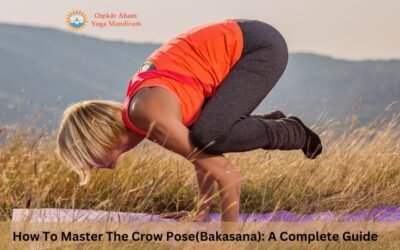Most people know about Chandra Namaskar and its importance in our daily lives. Due to the numerous benefits that yoga offers, our ancestors have been practicing it since ancient times, and therefore yoga is still alive. Today people are becoming aware of and starting to practice it again.
The word Chandra means ‘moon’. The sequence of asanas is the same as Surya Namaskar except that Ardha Chandrasana, the half-moon pose, is performed after Ashwa Sanchalanasana.
Whereas the twelve positions of Surya Namaskar relate to the year’s 12 zodiac or solar phases, the fourteen positions of Chandra Namaskar relate to the fourteen lunar phases.
Yoga practice is very beneficial and can help in making our life successful. With the help of yoga, we can lead a healthy life and avoid any stress.
There are many yoga asanas and several ways to practice them. Today, we will tell you about the Chandra Namaskar yoga sequence & Chandra Namaskar Steps or the moon salutation.
Today we will talk about traditional Chandra Namaskar in detail, how to perform Chandra Namaskar steps, what are Chandra namaskar benefits, and the precautions of Chandra namaskar.
Chandra Namaskar Vs Surya Namaskar
There are 12 Chandra Namaskar Steps, just like the Surya Namaskar (Sun Salutation). Still, unlike the sun salutation, which is performed in the morning, Chandra Namaskar (Moon Salutation) is performed during the night.
How To Do Chandra Namaskar Steps
Step 1: Pranamasana (Prayer pose):
• First of all, stand upright to perform the lunar salutation. Then raise your hands upwards. In this, make sure that your back is very straight.
• After doing this, tilt your body backward. You have to bend back as much as possible.
• Then open both your hands towards the sky.
Step 2: Hastauttan asana (Raised arms pose)
• In this process, bring your hands down from the waist and bend your hands to the feet.
• Make a posture that your knees join your head.
• In this process, you do not have to bend your knees; keep them straight.
Step 3: Padahastasana (Hand to foot pose)
• In this process, you move your left leg backward and keep your feet straight.
• Then bend your right leg from near the knees. While doing this, half the weight of your body will fall on the knee of your right leg. Now keep your hand near the right leg.
Step 4: Ashwa Sanchalanasana (Equestrian pose)
• Stretch the right leg back as comfortably as possible, tucking the toes under.
• At the same time, bending the left knee leaves the foot flat on the floor.
• Arch the back and gaze up to the sky
Step 5: Dandasana (Stick pose)
• Just as you did in your third step, keep your body weight on the left foot instead of your right foot.
• Then move your right leg backward and place it near the claws of your hands.
Step 6: Shishuasana (Child pose)
• you have to give weight on the left leg towards the fourth step.
• Also, try to touch your right leg with the ground.
• Also, you have to raise your hands upwards.
Step 7: Ashtanga Namaskara (Salute with eight parts or points)
• In this step, put both your hands on the ground below. Then raise the upper part of your waist upwards as much as possible.
• Repeat this process at least five times
Step 8: Bhujangasana (Cobra pose)
• Keeping the hands and feet in place, slide the chest forward and raise the chest.
• Opening the shoulders (pulling them away from the ears) and tilting the head back to look at the sky.
• The hips and thigh should be on the floor.
Step 9: Parvatasana (Mountain pose)
• keep both your knees on the ground, tilt your head slightly backward, and keep your hands upwards.
• In this process, keep all your weight on the knees.
Step 10: Ashwa Sanchalan Asana (Equestrian pose)
• In this, keep your hands in front, and the distance between the two should be up to one and a half feet.
• Then, sitting with the help of hands and claws, lift the knees slightly above the ground.
Step 11: Padahastasana (Hand to foot pose)
• In this step, sit with the weight on the paws of your feet.
• Also, touch your hands from the ground.
Step 12: Hastauttanasana (Raised arms pose)
• This is the last step of the lunar salutation, in which you have to stand upright and keep your hands in the posture of proof.
• In this way, your lunar salutation process is completed.
Chandra Namaskar Benefits
- By doing this asana, digestion works better, due to which the stomach remains healthy, and there are no stomach-related problems.
- Imagination also develops through its practice.
- It aids flexibility and increases the functioning and balance of the respiratory, circulatory, and digestive systems.
- Performing a lunar salutation brings energy into the body. At the same time, the body also gets the power to work.
Precautions of Chandra Namaskar (Moon Salutation):
- Whenever you do the lunar salutation posture, you should do it in the moon’s direction. This is only beneficial.
- Also, do not stress more than your ability.
- Not suitable for people having back pain.
- Pregnant women should not do this asana.
A person’s backbone breaks for any reason; they should not practice it too. It would be best if you took the advice from your doctor first.
Conclusion:
In the above post, we thoroughly discussed the step-by-step instructions to perform Chandra Namaskar. It is usually suggested that everyone exercise this yoga pose under the supervision of trained teachers. You can join the 200 yoga teacher training Rishikesh course.
For further details, contact us at:
Call/WhatsApp: +91-9997744876
Mail us at: info@yogateachertrainingschool.com




